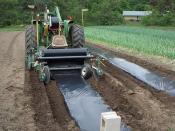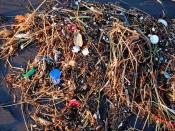Manufacturing of plastics:
Plastic manufacturing consists of four categories. The first is the acquiring of the raw materials. The monomers, simple compounds of carbon that make of polymer chains, are obtained from petrochemicals. These petrochemicals are widely available and tend to be cheaper than other raw materials. The second step is synthesising of the basic polymers that have been created from the monomers. This can be obtained through addition or condensation reactions. After this process the synthetic resin is heated or liquefied so that it can then be moulded. From this treatment the plastics are then moulded into the useful everyday products that can be found everywhere in everything. Plastics can have many properties from being very hard, tough and brittle to being very soft, delicate and flexible.
Types of plastics:
What makes them different?
Plastics can vary widely. The smaller molecules, monomer, that make up the long chains determine the structural form of the plastic and also their physical features.
When the chains are linked strongly they form rigidly and the plastic can often be tough and strong. The only downfall of this is that the plastic is brittle and can easily snap and bend.
All plastics can be considered as thermoplastics or thermosetting plastics. With thermosetting plastics when they are burnt instead of melting and being able to be reformed they burn up and char whilst leaving carbon residue. Thermoplastics have strong forces between the molecules but weak forces between its chains. When thermoplastics are melted they are able to retain their shape and be remoulded into other forms.
Why do we need different plastics?
We need different plastics because they cannot all be used for the same purposes. Different plastics can be useful for their certain properties such as strength, flexibility, weight or temperature resistance.


